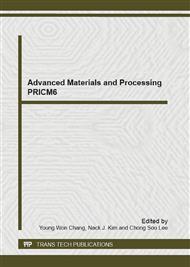p.793
p.797
p.801
p.805
p.809
p.813
p.817
p.821
p.825
Raman Spectroscopic Characterization for Carbon Nanofibers Produced by Using Ferric Chloride of Different Concentration as Catalyst Precursor
Abstract:
Catalytic grown carbon nanofibers have been obtained from decomposition of ethanol over copper plate. Ferric chloride of different concentration was employed as the catalyst precursor. Scanning electron microscopy has shown that different morphologies of carbon nanofibers can be obtained by using different concentration of catalyst precursor solution. The results from the Raman spectroscopic characterization have also demonstrated that the graphitization of carbon nanofibers can be tailored by control of the concentration of catalyst precursor solution. When the information from these characterization are combined with that of the associated morphologies of the carbon nanofibers, it is possible to synthesize perfect carbon nanofibers.
Info:
Periodical:
Pages:
809-812
Citation:
Online since:
October 2007
Authors:
Price:
Сopyright:
© 2007 Trans Tech Publications Ltd. All Rights Reserved
Share:
Citation:


